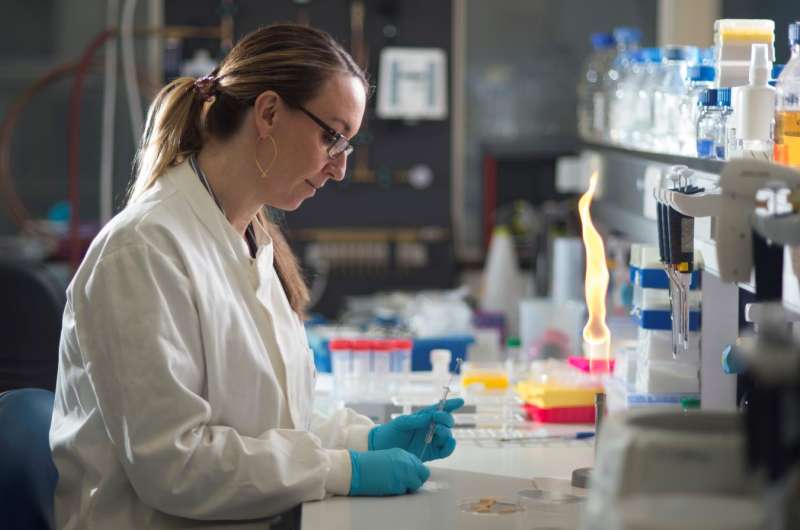Mammal testing could be cut by moth larvae

The number of mammals used in animal testing could be cut dramatically and replaced with moth larvae.Last year two University of Exeter scientists founded BioSystems Technologies Ltd, which provides moth larvae to researchers—offering a cheap and effective way to carry out tests that would normally be done on mammals such as mice.Now a £12,000 grant from the NC3Rs CRACK IT Solutions scheme will support a partnership with contract research organisation Envigo and will be used to assess whether the larvae can reduce the number of mammals used for testing the toxicity of chemicals.
A separate £12,000 grant from CRACK IT Solutions will support a partnership with antibiotic discovery company Demuris and will be used to see whether the larvae are a fast and effective way to test leads in the search for new antibiotics."Scientists using our model have been able to reduce their use of mammals by up to 80%," said Dr Olivia Champion, who co-founded BioSystems Technologies Ltd with University of Exeter colleague Professor Richard Titball.
"If the study with Envigo (assessing effectiveness of using larvae for toxicity testing) is positive, Envigo will start offering that form of testing to their clients in industry.
"We don't have the full results yet, but what we've seen so far looks very promising."
Any new chemical must be tested for toxicity, and at present the standard approach is to use mammals such as mice, rats or rabbits.
But Biosystems Technology's larvae—which come from the wax moth (Galleria mellonella) and are sold under the brand name TruLarv—offer a low-cost alternative which allows tests to be done faster and with fewer ethical concerns.
Dr Champion and Professor Titball are also working with Demuris, which has a large and unique collection of actinomycete bacteria - which are thought to produce completely novel antibacterial drugs.
"These samples are a promising area in the search for new antibiotics, but there are thousands of them and many have never been checked before," said Dr Champion.
"Using our larvae at an early stage could help identify promising leads and make sure ineffective or toxic samples are not progressed for testing in mammals."
Wax moth larvae have been widely used by scientists for the past five years, but until BioSystems Technologies Ltd there was no way to get reliable specimens.
"People were literally buying these larvae from fishing bait shops," said Dr Champion.
"Even scientists from the top research institutions here and abroad were doing this, and the inconsistency of those larvae introduced unacceptable levels of variability into results."
Provided by University of Exeter


















